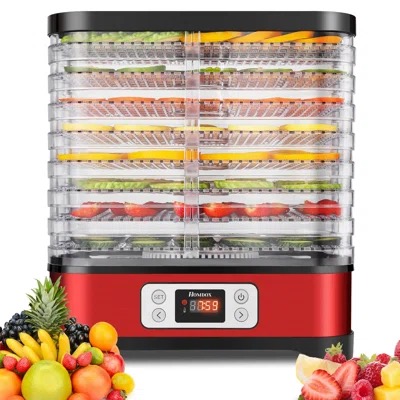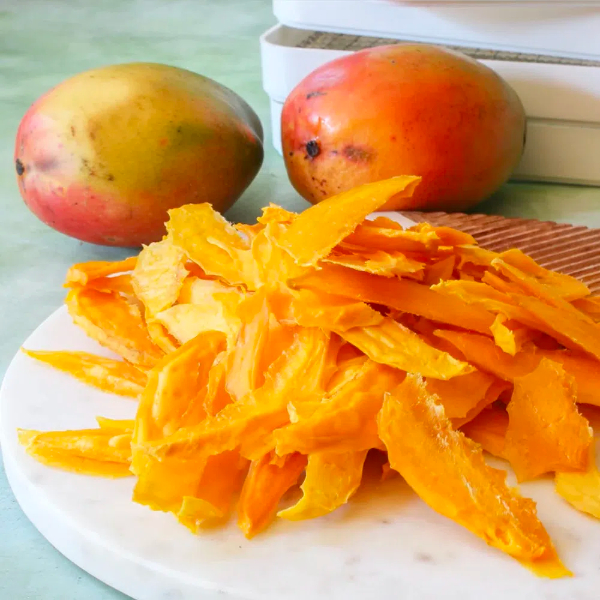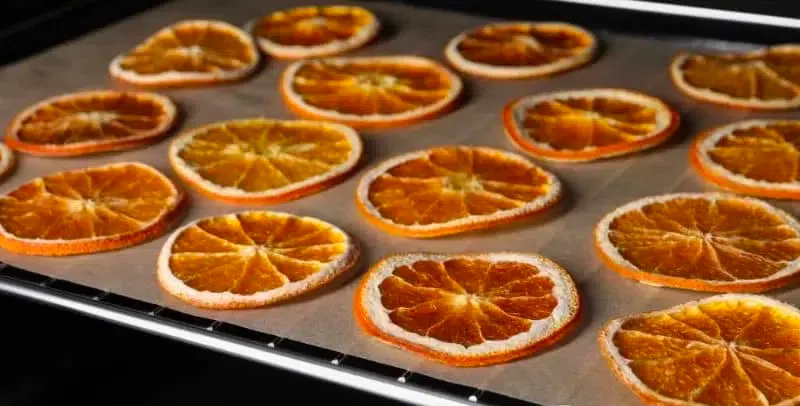
Content Menu
● Understanding the Ronco Food Dehydrator
>> Key Features:
● Benefits of Using a Food Dehydrator
● Preparing Your Food
>> Steps for Preparation:
● Setting Up the Dehydrator
● Monitoring the Drying Process
>> Checking for Doneness:
● Common Mistakes to Avoid
● Cleaning Your Ronco Food Dehydrator
>> Cleaning Steps:
● Creative Recipes for Your Ronco Food Dehydrator
>> Dried Fruit Snacks
>> Vegetable Chips
>> Jerky
● Conclusion
● FAQ
>> 1. What types of food can I dehydrate using a Ronco Food Dehydrator?
>> 2. How long does it take to dehydrate food in a Ronco Food Dehydrator?
>> 3. Can I stack different types of food in the dehydrator?
>> 4. Is it necessary to rotate trays during dehydration?
>> 5. How do I know when my food is properly dried?
● Citations:
Food dehydrators, particularly the Ronco brand, have become increasingly popular among home cooks and health enthusiasts. These devices allow you to create healthy snacks like dried fruits, vegetables, and jerky without preservatives or additives. This article will guide you through the process of using a Ronco Food Dehydrator effectively, ensuring you get the best results.

Understanding the Ronco Food Dehydrator
The Ronco Food Dehydrator is designed to remove moisture from food, thereby extending its shelf life. This process involves heating food at low temperatures while circulating air around it. The Ronco model typically features multiple stackable trays, allowing you to dehydrate various foods simultaneously.
Key Features:
- Multiple Trays: Most models come with five trays, which can be stacked to maximize drying capacity.
- Adjustable Temperature Settings: Different foods require different temperatures for optimal drying.
- Quiet Operation: The convection fan circulates air quietly, making it suitable for kitchen use without disruptive noise.
Benefits of Using a Food Dehydrator
Using a food dehydrator like the Ronco offers numerous benefits:
- Extended Shelf Life: Dehydrating food inhibits bacterial growth and spoilage, allowing you to store your favorite fruits, vegetables, and snacks for months.
- Nutrient Retention: Dehydration helps retain essential vitamins and minerals that might be lost in other preservation methods.
- Cost-Effective Preservation: You can save money by buying food in bulk and preserving it at home rather than purchasing pre-packaged dried goods.
- Healthy Snack Options: Dried snacks are healthier alternatives to store-bought options laden with preservatives and additives.
- Space-Saving Storage: Dried food takes up significantly less space than fresh or frozen alternatives.
Preparing Your Food
Before using the dehydrator, it's essential to prepare your food properly.
Steps for Preparation:
1. Select Fresh Produce: Choose ripe fruits and vegetables free from bruises or decay.
2. Wash Thoroughly: Clean all produce under running water to remove dirt and pesticides.
3. Cut into Uniform Pieces: Slice fruits and vegetables into even pieces to ensure consistent drying. For example:
- Fruits: Cut apples into thin slices.
- Vegetables: Chop carrots into small sticks.
4. Pre-Treat if Necessary: Some fruits may require pre-treatment to prevent browning. Soaking in lemon juice or a saltwater solution can help.
5. Blanching Vegetables: For certain vegetables like broccoli or carrots, blanching before dehydration helps preserve color, texture, and nutrients.
Setting Up the Dehydrator
Once your food is prepared, follow these steps to set up your Ronco Food Dehydrator.
1. Stack the Trays: Place the prepared food evenly on the trays without overlapping pieces to allow proper airflow.
2. Adjust Temperature Settings: Depending on what you are dehydrating:
- Fruits: 135°F (57°C)
- Vegetables: 130°F to 145°F (54°C to 63°C)
- Herbs: 90°F to 100°F (32°C to 38°C)
- Meat Jerky: Highest setting before cooking at 165°F (74°C) for safety.
3. Plug In and Start: Once everything is in place, plug in the dehydrator. There is no need for a power switch; it starts working as soon as it's plugged in.
Monitoring the Drying Process
The drying time varies based on the type of food and its moisture content. Here are some general guidelines:
- Fruits: Approximately 6-12 hours
- Vegetables: Approximately 8-10 hours
- Meats: Approximately 8-12 hours
Checking for Doneness:
- Fruits should feel leathery and not sticky.
- Vegetables should be brittle and break easily.
- Jerky should be tough but pliable.
Common Mistakes to Avoid
When using a Ronco Food Dehydrator, there are common pitfalls that can affect your results:
- Overloading Trays: Avoid overcrowding trays as it restricts airflow and leads to uneven drying.
- Incorrect Temperature Settings: Different foods require different temperatures; ensure you're using the right setting for each type of food.
- Not Rotating Trays: Most dehydrators don't distribute heat evenly across all trays; rotate them periodically for consistent results.
- Skipping Pre-Treatment for Fruits: Not using lemon juice or other acidic solutions can lead to browning in fruits like apples and bananas.
Cleaning Your Ronco Food Dehydrator
After enjoying your homemade snacks, cleaning the dehydrator is essential for maintaining its efficiency.
Cleaning Steps:
1. Unplug and Cool Down: Always unplug the unit and let it cool before cleaning.
2. Remove Trays and Lid: Take out all trays and the top lid for easy access.
3. Wash with Warm Soapy Water: Use a non-abrasive sponge and mild detergent to clean the trays and lid.
4. Rinse and Dry Thoroughly: Ensure no soap residue remains before drying completely to prevent contamination in future batches.
5. Clean the Base: Wipe down the base with a damp cloth, avoiding excess moisture near electrical components.

Creative Recipes for Your Ronco Food Dehydrator
Using your Ronco Food Dehydrator opens up a world of culinary creativity. Here are some delicious recipes you can try:
Dried Fruit Snacks
1. Apple Chips
- Thinly slice apples.
- Sprinkle with cinnamon if desired.
- Dehydrate at 135°F for about 6-8 hours until crispy.
2. Banana Chips
- Slice bananas thinly.
- Optionally soak in lemon juice.
- Dehydrate at 135°F for about 8-12 hours until crispy but pliable.
Vegetable Chips
1. Kale Chips
- Tear kale into bite-sized pieces.
- Toss with olive oil and seasoning.
- Dehydrate at 135°F for about 8 hours until crispy.
2. Carrot Sticks
- Cut carrots into thin sticks.
- Blanch briefly before dehydrating.
- Dehydrate at 125°F for about 6-8 hours until brittle.
Jerky
1. Beef Jerky
- Use lean cuts of beef; trim off any fat.
- Marinate overnight in your favorite seasoning mix.
- Slice thinly against the grain.
- Dehydrate at 160°F until dry but still pliable (about 6 hours).
Conclusion
Using a Ronco Food Dehydrator is a straightforward process that can yield delicious, healthy snacks right at home. By selecting fresh ingredients, preparing them properly, monitoring their drying process, and maintaining cleanliness, you can enjoy a variety of dehydrated foods year-round. The versatility of this appliance allows you not only to preserve food but also to explore new culinary creations that are both nutritious and tasty.

FAQ
1. What types of food can I dehydrate using a Ronco Food Dehydrator?
You can dehydrate fruits, vegetables, herbs, meats (for jerky), and even make fruit leathers or yogurt.
2. How long does it take to dehydrate food in a Ronco Food Dehydrator?
Drying times vary by food type; fruits typically take 6-12 hours, vegetables take about 8-10 hours, and meats can take between 8-12 hours.
3. Can I stack different types of food in the dehydrator?
Yes, but it's best to keep similar foods together for even drying since different foods have varying moisture content and drying times.
4. Is it necessary to rotate trays during dehydration?
While not absolutely necessary, rotating trays every few hours can help achieve more consistent results by ensuring even airflow around all food items.
5. How do I know when my food is properly dried?
Fruits should feel leathery without stickiness; vegetables should be brittle; jerky should be tough yet pliable without any moisture remaining inside.
Citations:
[1] https://www.cnet.com/pictures/tips-for-using-your-new-dehydrator/
[2] https://homesteadingfamily.com/preservation-101-intro-to-dehydrating-food/
[3] https://etsolutions.in/10-amazing-benefits-of-electrical-food-dehydrator-machines/
[4] https://www.callmelore.com/fool-proof-healthy-dehydrator-recipes/
[5] https://www.freshoffthegrid.com/dehydrating-food/
[6] https://www.freshtimefoods.com/post/dehydrating-tips-common-mistakes-to-avoid
[7] https://www.webmd.com/diet/dehydrating-food-good-for-you
[8] https://eatsleepwild.com/homemade-dehydrated-backpacking-meals/
[9] https://www.youtube.com/watch?v=rR2G5UO-5Ms
[10] https://www.bestbuy.com/discover-learn/10-reasons-to-buy-a-food-dehydrator/pcmcat1634332391134











